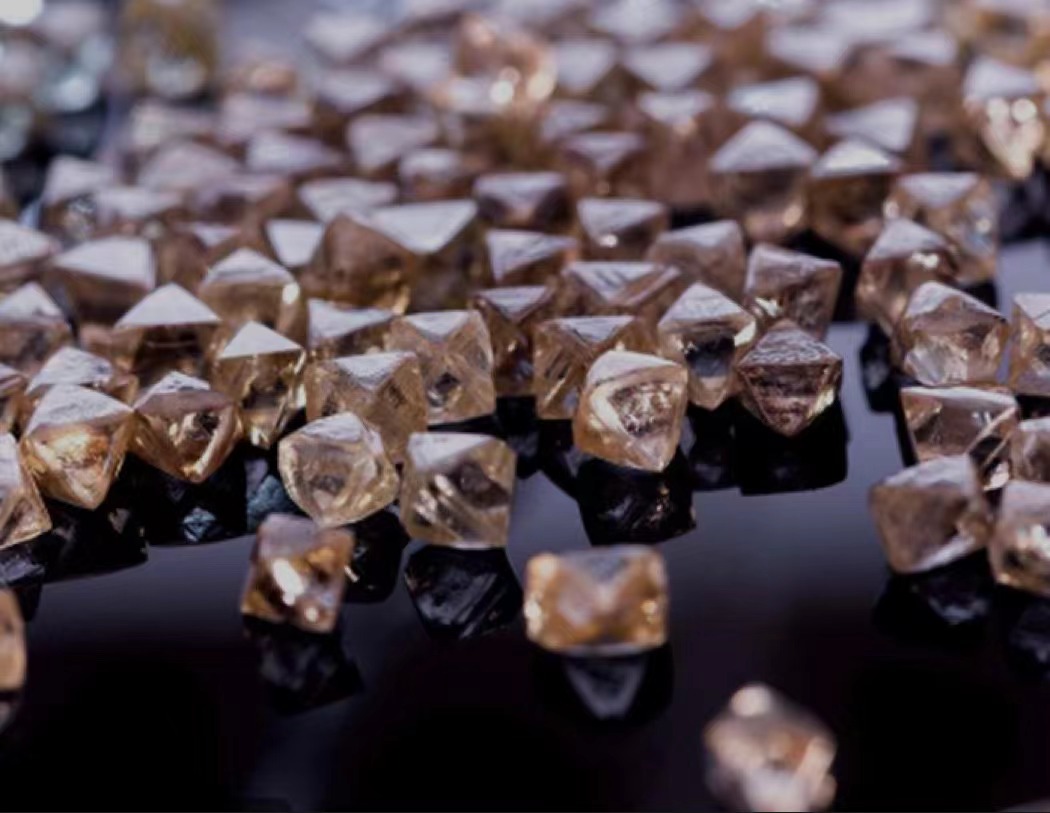Diamond, with its unparallelled hardness and brilliant lustre, is known as the "king of gems". However, do you know that although they are all called diamonds, their crystal structure and impurity content are actually different, which makes each diamond unique. Today, we will discuss in depth the classification of diamond crystals, the relationship between impurities and their characteristics.
First of all, let's understand the classification of diamond. According to its crystal structure and impurity content, diamond can be mainly divided into four types: la type, lb type, lla type and llb type. These classifications are mainly based on the way and content of nitrogen impurities in diamond.
La-shaped diamond
La-type diamond is the most common type of natural diamond. The crystal contains nitrogen impurities with a volume fraction of more than 0.1%. It does not have paramagnetic characteristics, and the crystal is yellow. This type of diamond accounts for more than 98% of the natural diamond production ratio. It has a high nitrogen content and a specific crystal structure. This type of diamond has excellent mechanical properties, high electrical insulation, but poor thermal conductivity, and relatively narrow light transmission band. These characteristics are mainly due to the accumulation of nitrogen impurities in la-type diamond in a non-paramagnetic way, resulting in their specific physical properties. Most natural diamonds belong to this type.
Lb-type diamond
In contrast, the nitrogen content of lb-type diamond is equivalent to that of la-type. The difference is that the nitrogen it contains exists in the form of independent single nitrogen and in a paramagnetic way. Its thermal conductivity is much better than that of the la type, and this kind of diamond shows a more obvious yellow colour. It is also poor in mechanical strength. In artificial diamond, the lb type occupies a considerable proportion. It is extremely rare in natural diamonds. This is because in natural diamond, it is constrained by the trend of the minimum internal energy of the crystal. Over time, the nitrogen as an impurity tends to accumulate and transform from lb to la type.
Lla-type diamond
The nitrogen content of lla-type diamond is extremely low, which is the main difference between it and other types. The interior of the crystal is colourless and transparent. Due to the reduction of nitrogen content, lla-type diamond shows extremely high thermal conductivity and the widest light transmission band. The thermal conductivity is 5 times that of copper at room temperature. However, this type of diamond is also relatively rare in nature, accounting for about 2% of natural diamond. Nowadays, scientists have successfully produced this diamond with low nitrogen content and high thermal conductivity through artificial methods.
Because of its high thermal conductivity, it is widely used in high-precision fields such as solid-state microwaves, lasers, high-power body tubes, variable reactor diodes, and heat sinks for semiconductor switching devices.
Llb type diamond
Finally, llb diamond is characterised by a much lower nitrogen content than la, but it contains boron, which is excellent colourless and sky blue. This type of diamond has the characteristics of P-type semiconductors, and this kind of diamond is rare in nature. In llb-type diamonds, the role of boron is mainly to replace carbon atoms and form boron-carbon covalent, thus changing the electronic structure and chemical properties of diamond, such as oxidation resistance and heat resistance. Experiments show that the starting oxidation temperature on the surface of boron-containing diamond is 150°C-250°C higher than that of ordinary diamond. At present, people can artificially produce semiconductor diamond by doping.
Due to its special crystal structure with high hardness and wear resistance, llb diamond can be applied to various cutting tools, drills, grinding wheels and other tool materials, as well as high-precision machining materials to improve processing efficiency and accuracy. In addition, llb diamond also has the performance of semiconductors, so it is often used to manufacture electronic components such as rectifier he-triodes. Because of its high optical transmittance and low thermal conductivity, llb diamond can also be used to manufacture optical devices and lasers.

Through the above analysis, we can see that there is a close relationship between the classification of diamond crystals and impurities. Different types of impurities and content affect the physical and chemical properties of diamonds, thus giving them unique characteristics and value. This knowledge not only helps us better understand this magical king of gems, but also provides an important theoretical basis for future research and application. It is conducive to us to further explore its application potential in the high-tech field.
Source: abrasive abrasives
